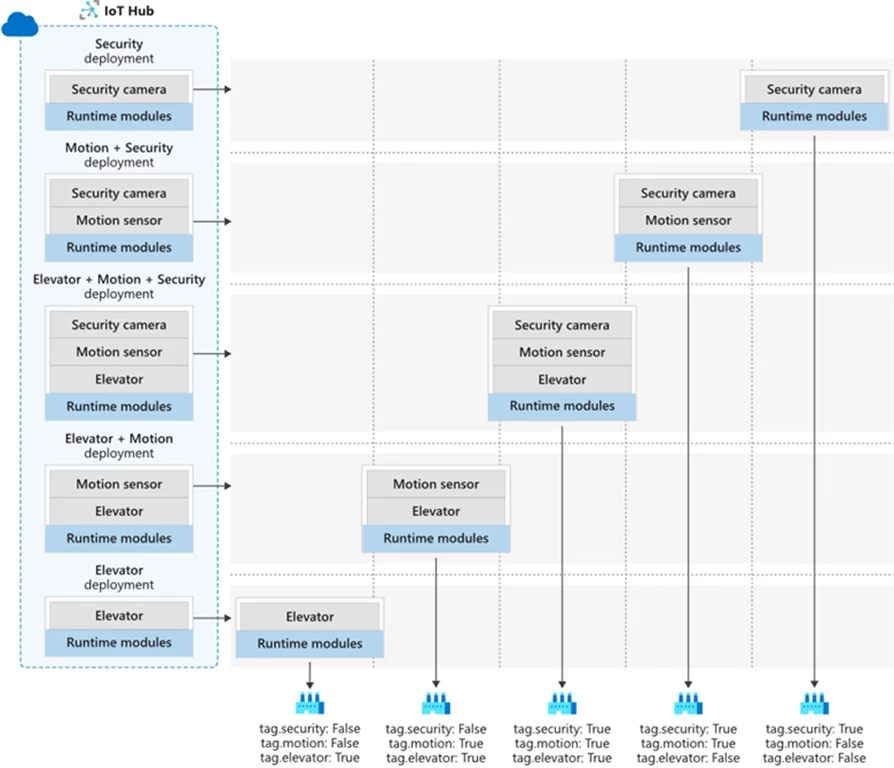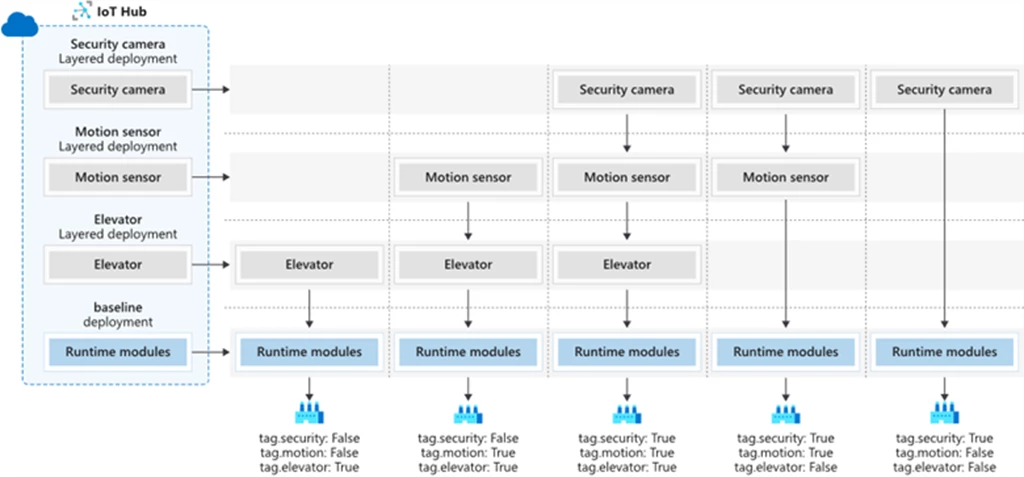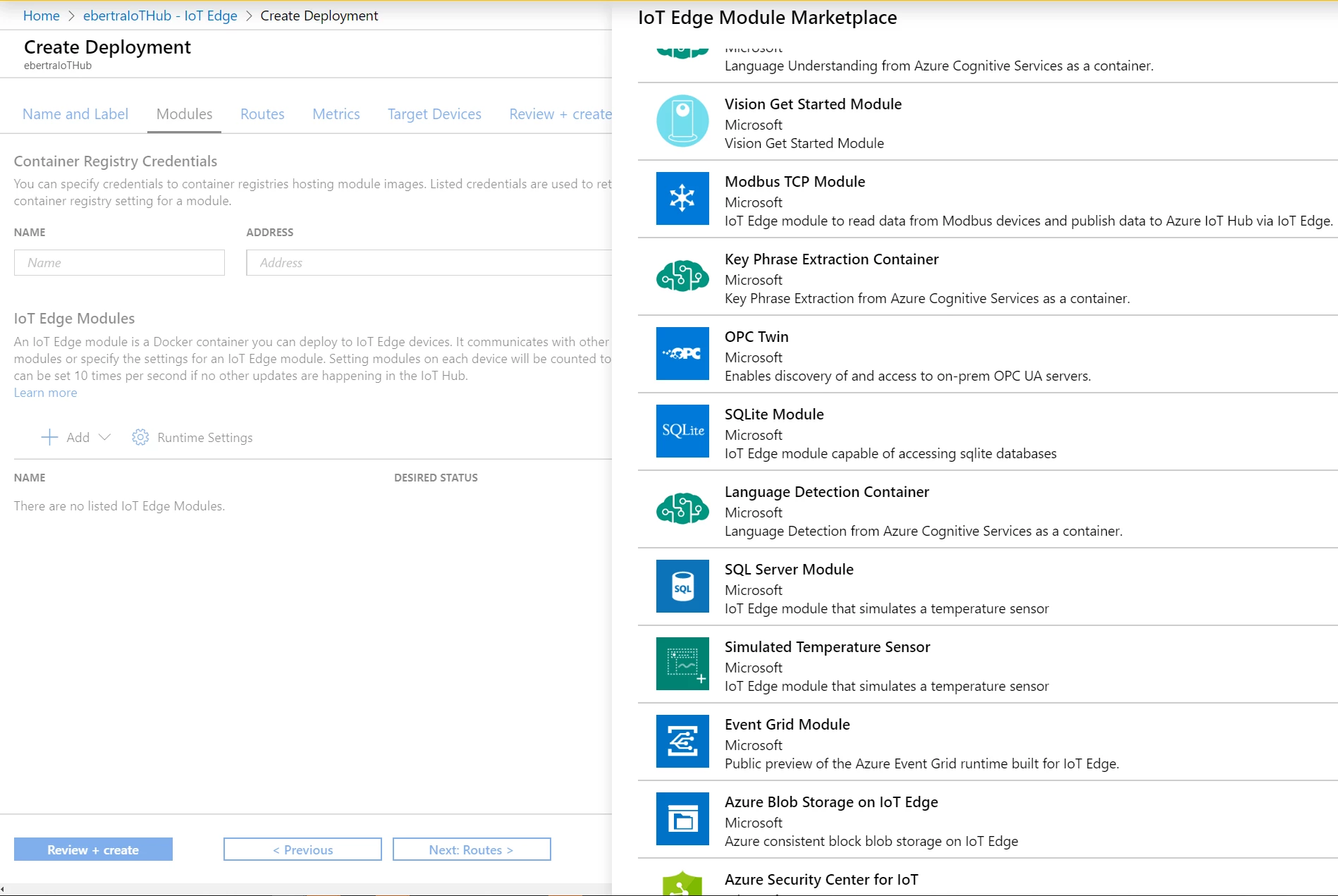Azure IoT Edge, Internet of Things
New enhancements for Azure IoT Edge automatic deployments
Posted on
2 min read
Since releasing Microsoft Azure IoT Edge, we have seen many customers using IoT Edge automatic deployments to deploy workloads to the edge at scale. IoT Edge automatic deployments handle the heavy lifting of deploying modules to the relevant Azure IoT Edge devices and allow operators to keep a close eye on status to quickly address any problems. Customers love the benefits and have given us feedback on how to make automatic deployments even better through greater flexibility and seamless experiences. Today, we are sharing a set of enhancements to IoT Edge automatic deployments that are a direct result of this feedback. These enhancements include layered deployments, deploying marketplace modules from the Azure portal and other UI updates, and module support for automatic device configurations.
Layered deployments
Layered deployments are a new type of IoT Edge automatic deployments that allow developers and operators to independently deploy subsets of modules. This avoids the need to create an automatic deployment for every combination of modules that may exist across your device fleet. Microsoft Azure IoT Hub evaluates all applicable layered deployments to determine the final set of modules for a given IoT Edge device. Layered deployments have the same basic components as any automatic deployment. They target devices based on tags in the device twins and provide the same functionality around labels, metrics, and status reporting. Layered deployments also have priorities assigned to them, but instead of using the priority to determine which deployment is applied to a device, the priority determines how multiple deployments are ranked on a device. For example, if two layered deployments have a module or a route with the same name, the layered deployment with the higher priority will be applied while the lower priority is overwritten.

This first illustration shows how all modules need to be included in each regular deployment, requiring a separate deployment for each target group.

This second illustration shows how layered deployments allow modules to be deployed independently to each target group, with a lower overall number of deployments.
Revamped UI for IoT Edge automatic deployments
There are updates throughout the IoT Edge automatic deployments UI in the Azure portal. For example, you can now select modules from Microsoft Azure Marketplace from directly within the create deployment experience. The Azure Marketplace features many Azure IoT Edge modules built by Microsoft and partners.

Automatic configuration for module twins
Automatic device management in Azure IoT Hub automates many of the repetitive and complex tasks of managing large device fleets by using automatic device configurations to update and report status on device twin properties. We have heard from many of you that you would like the equivalent functionality for configuring module twins, and are happy to share that this functionality is now available.
Next steps
- Learn about layered deployments for Azure IoT Edge
- Learn about automatic device management support for module twins